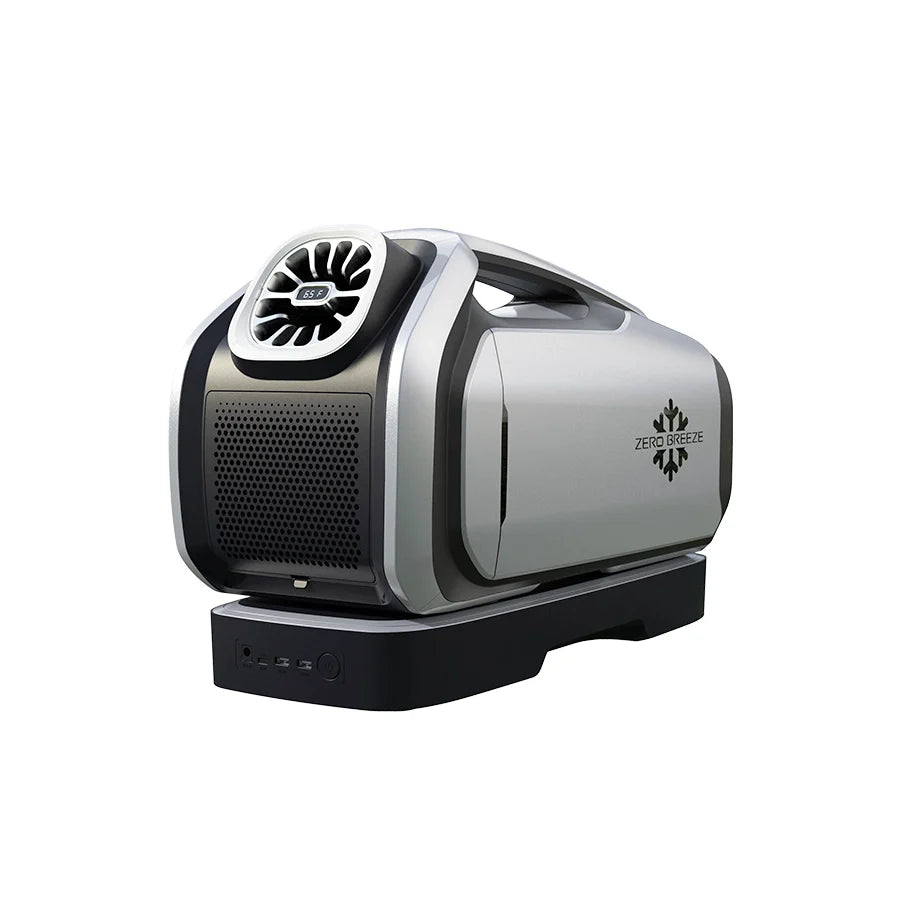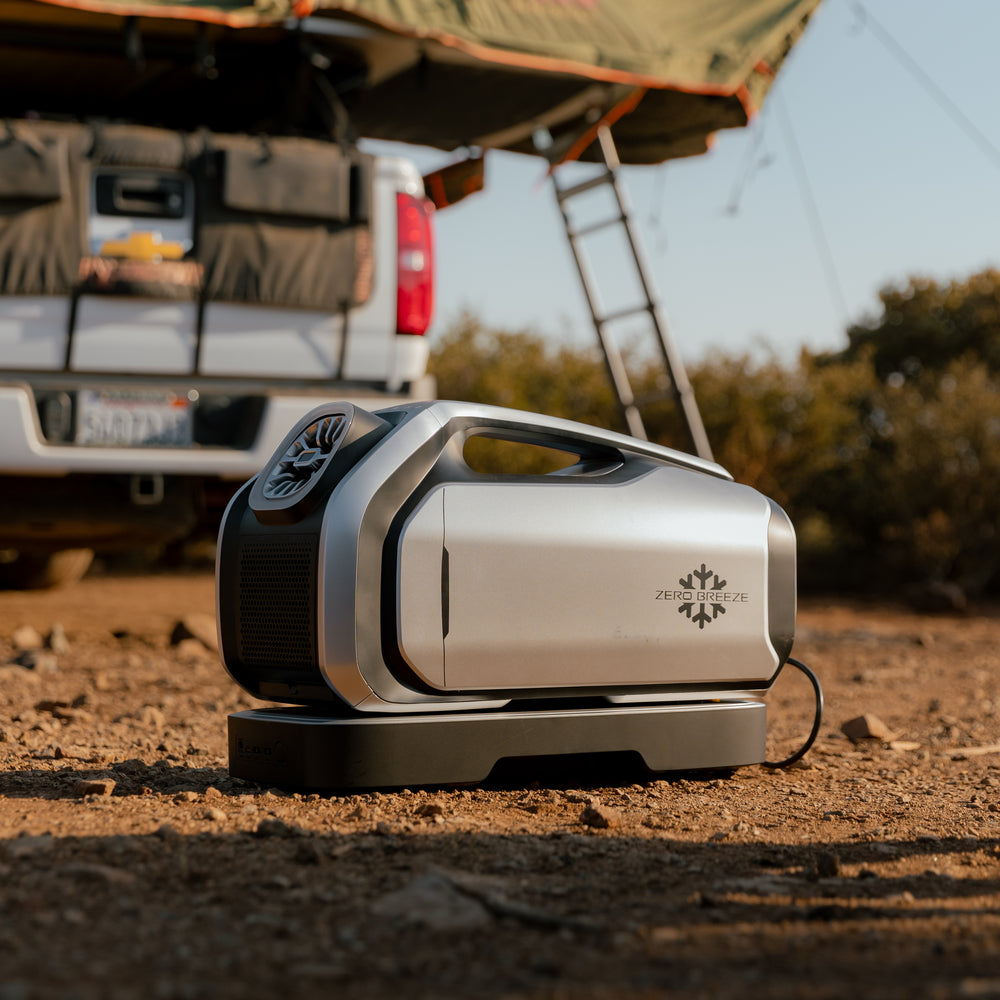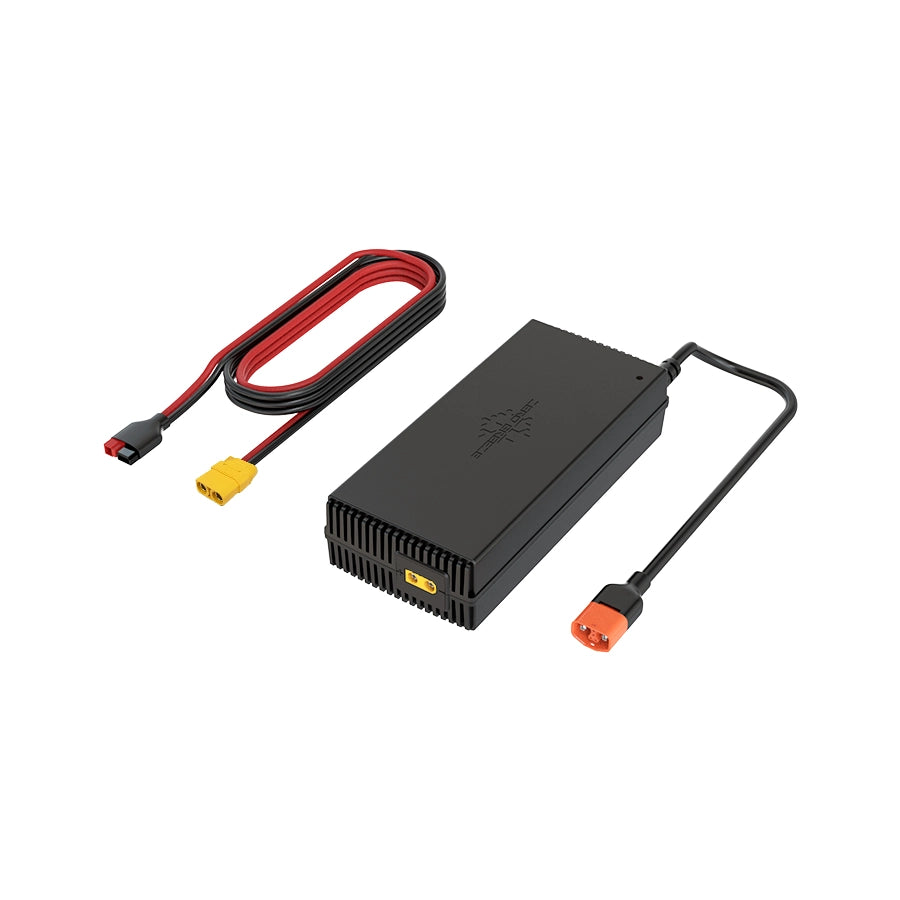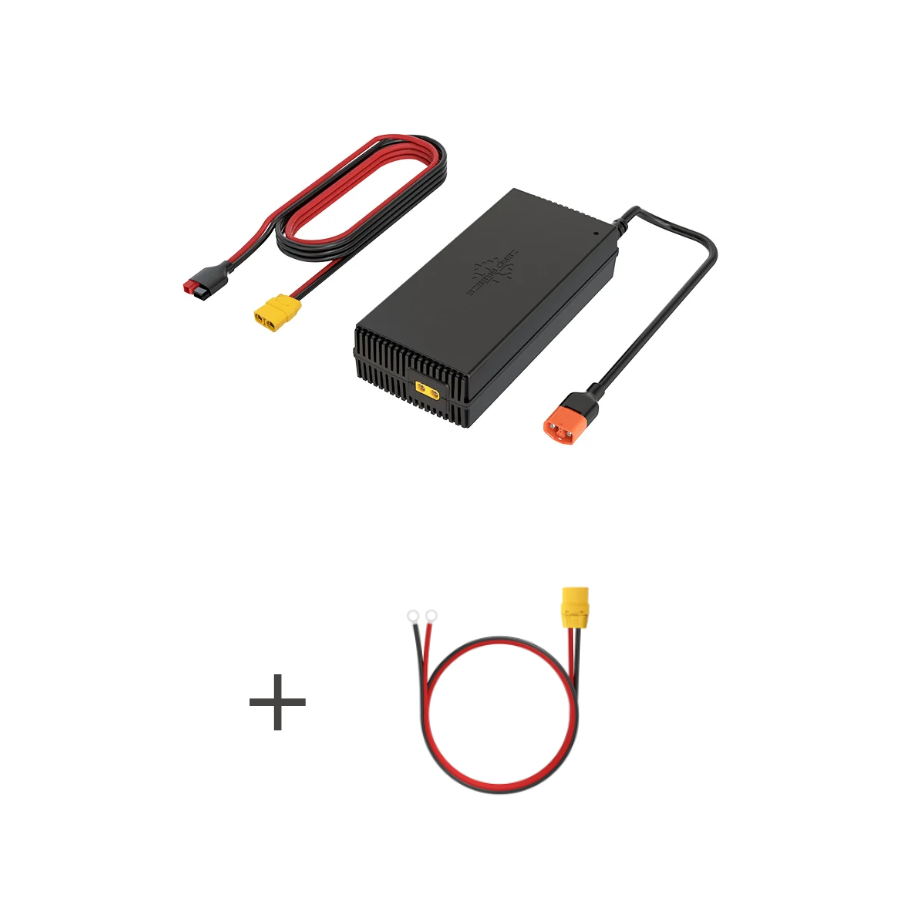Why the ZERO BREEZE Mark 3 Uses a Dual-Duct System

One of the most common questions we get is why the Mark 3 portable air conditioner uses a dual-duct system instead of a single-duct design.
At first glance, a single-duct portable air conditioner might seem like the more efficient choice. After all, it appears to recycle already-cooled indoor air, which intuitively feels like it should take less effort to reach the desired temperature. But is that really the case? Is a single-duct system truly more efficient than a dual-duct system?
How a Portable Air Conditioner Works
Before diving into the differences between these systems, let's first understand the basic working principle of a portable air conditioner. A typical system has four main components: three mechanical elements (the compressor, condenser, and evaporator) and one essential chemical element (the refrigerant).
Take the ZERO BREEZE Mark 3 as an example:
- The evaporator is positioned at the front of the unit, while the condenser sits at the back.
- The compressor and refrigerant are housed inside the unit.

Let's break it down:
- At the Front: The blower draws in warm air from the room and passes it across the evaporator coil. Meanwhile, the refrigerant absorbs heat from the air, evaporating from liquid to gas. The cooled air is then blown back into the room, while the refrigerant gas moves to the compressor.
- At the Back: The compressor raises the pressure and temperature of the refrigerant gas, which then flows to the condenser. Here, the refrigerant releases heat as it condenses back into liquid, causing the condenser to become hot.
At this point, the air conditioner needs airflow to vent this heat and cool the condenser. But where does the air come from? Here's where the key difference between the single-duct system and dual-duct system lies.
Single Duct System vs. Dual-Duct System
Now that you have a basic understanding of how a portable air conditioner works, it's time to get down to what we're here for.
- Single-Duct System
In a single-duct system, the unit vents hot air through one duct to the outside. This air is drawn from the room itself. As warm air is expelled, the room's air pressure drops, causing hot outdoor air to be pulled in through gaps around windows and doors. This makes it harder and takes longer for the unit to cool the space efficiently.

- Dual-Duct System
A dual-duct system has two separate ducts: one draws outdoor air in to cool the condenser, while the other vents hot air outside. By using outdoor air for cooling, this system avoids the negative pressure problems seen in single-duct units.
With separate ducts handling intake and exhaust independently, the cooling process at the front and the heat venting at the back happen simultaneously and more efficiently, helping the unit reach the desired temperature faster.

Overall, dual-duct portable air conditioners clearly deliver better efficiency.
ZERO BREEZE Mark 3 Portable AC with a Dual-Duct System
Because dual-duct systems are more efficient, the ZERO BREEZE Mark 3 is built with this design to deliver reliable performance across a wide range of environments. Whether you're outdoors at a racetrack, campsite or open field, or inside a van, rooftop tent or boat, the dual-duct setup helps maintain powerful cooling without sacrificing efficiency.
To better fit different setups, the Mark 3 comes with separate ducts, along with adapters for easy installation. This is especially useful in enclosed spaces, where connecting the ducts helps prevent air mixing and negative pressure.
The system is also flexible. You can choose whether or not to install the ducts, depending on your environment and setup. For optimal performance, just make sure the front (cooling) and rear (exhaust) sections draw air from different spaces. Whether you achieve that through ducting or positioning is entirely up to you.

Conclusion
When it comes to cooling speed and efficiency, dual-duct portable air conditioners clearly take the lead. These are important factors to consider when you're looking for cool relief from the hot, hot, hot summer.
Wondering about the setup of the Mark 3 in different scenarios? Stay tuned for our next blog post, or leave a comment below to let us know what you would like to read next.











Hi Darlene, great question! For the Mark 3’s dual-hose system, it’s generally best to draw intake air from outside, even if it’s hotter, because it’s designed to isolate the cooling loop from your indoor air and avoid negative pressure. This helps maintain performance and efficiency. Let us know if you’d like help optimizing your setup!
Hi Mike, good question! Yes, if the intake and exhaust are too close in a window setup, there’s a chance the intake could pull in some of the exhaust air. We recommend keeping some distance between them to improve cooling performance.
Hi Robert, thank you so much for sharing your setup and experience! We’re really glad to hear that the Mark 3 is working well in your trailer conversion and that you’re happy with the results so far. We’d love to see photos of your installation. Feel free to share them anytime!
Thank you for this. I really appreciate it. Just one question: is it ALWAYS better to draw air in from the outside to cool the machine – like if it’s hotter outside than inside our van?
With the intake and exhaust close to each other in a window set up in a van, does the intake suck in part of the exhaust? Thanks, Mike
Leave a comment